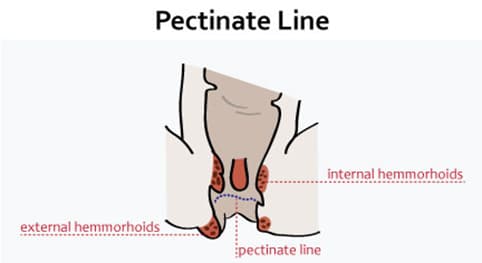Overview

- Anal canal
- divided into upper 2/3 (visceral portion) that belongs to the intestines and lower 1/3 (somatic portion) that belongs to the perineum
- upper 2/3 is derived from the hindgut, endodermal in origin
- lower 1/3 is derived from the proctodeum, ectodermal in origin
- pectinate (dentate) line is the junction between endoderm and ectoderm and is located at the inferior limit of the anal valves
- pectinate line divides the visceral and somatic portion
- Upper 2/3
- above pectinate line
- simple columnar epithelium
- upper 2/3 anal canal is the site of adenocarcinoma
- arterial supply via the superior rectal artery, a continuation of IMA
- venous drainage
- superior rectal vein → inferior mesenteric vein → portal system
- lymphatic drainage to the internal iliac lymph nodes
- internal hemorrhoids
- occur above the pectinate line and are covered by the mucous membrane
- receive visceral innervation and therefore are not painful
- may be a sign of portal hypertension
- Lower 1/3
- below pectinate line
- stratified squamous epithelium
- lower 1/3 of the anal canal is the site of squamous cell carcinoma
- arterial supply via the inferior rectal arteries, branches of the internal pudendal arteries
- venous drainage
- inferior rectal vein → internal pudendal vein → internal iliac vein → IVC
- lymphatic drainage to the superficial inguinal lymph nodes
- external hemorrhoids
- occur below the pectinate line and are covered by the skin
- receive somatic innervation by the inferior rectal nerve, a branch of the pudendal nerve, and therefore are painful



